How To Properly Use A Rowing Machine At The Gym
Are you excited to try out the new rowing machine at the gym? Well, you’re in luck! In this article, you will learn how to properly use a rowing machine so you can get the most out of your workout. We will start by showing you how to set up the machine correctly, and then we will guide you through the proper technique for rowing. Whether you’re a beginner or have been using rowing machines for a while, this article is perfect for you. So, let’s get started and become rowing pros!
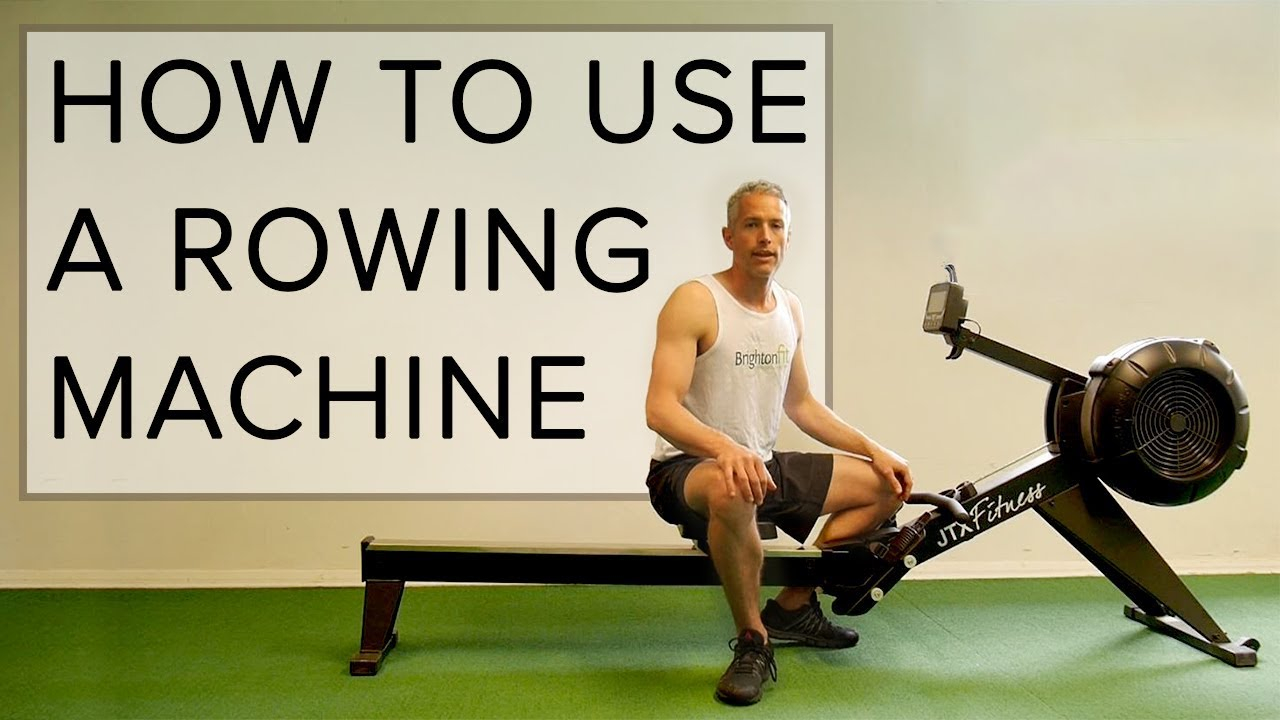
Setting Up the Rowing Machine
Adjusting the Resistance
Before you hop onto the rowing machine, you need to adjust the resistance to a level that suits your fitness level. The resistance on the rowing machine determines how challenging it will be to row. If you’re just starting out, it’s best to start with a low resistance setting and gradually increase it as you build strength and stamina.
Setting the Foot Rest
Next, you need to set the foot rest on the rowing machine. Adjust the foot rest so that it is secure and comfortable. It should be positioned in a way that allows you to push off with your legs without feeling any discomfort or strain. Make sure your feet are securely strapped in and that your toes are pointed slightly upward.
Adjusting the Seat
The seat of the rowing machine should be set at a position that allows for proper leg and body alignment. When you sit on the seat, your legs should be slightly bent at the catch position (more on that later). Adjust the seat forward or backward until you find a comfortable position that allows for proper form and range of motion.
Checking the Handle
Before you start rowing, it’s important to check the handle on the rowing machine. Make sure it is securely attached and that there are no loose or damaged parts. The handle should be at a height that allows for a comfortable grip. You should be able to hold the handle without straining your arms or shoulders.
Securing the Straps
Lastly, you need to secure the straps on the rowing machine. The straps are there to keep your feet in place and prevent them from slipping. Adjust the straps so that they are snug around your feet but not too tight. You want to have a secure and comfortable fit. Double-check that the straps are securely fastened before you start rowing.
Proper Body Positioning
Sitting Position
When you sit on the rowing machine, it’s important to maintain a proper sitting position. Sit up straight with your back aligned against the seat backrest. Avoid slouching or rounding your shoulders. Engage your core muscles to help support your back and maintain good posture throughout your rowing session.
Foot Position
Your foot position on the rowing machine is crucial for proper rowing technique. Place your feet securely on the footrest with your toes pointed slightly upward. Your heels should be lightly touching the footrest. This position allows you to push off with your legs effectively and engage the muscles in your lower body.
Hand Placement
When gripping the handle on the rowing machine, make sure your hands are positioned comfortably. Maintain a relaxed but firm grip on the handle, with your thumbs wrapped around it. Your hands should be shoulder-width apart, allowing for a balanced and controlled stroke. Avoid gripping the handle too tightly, as this can lead to unnecessary tension in your arms and shoulders.
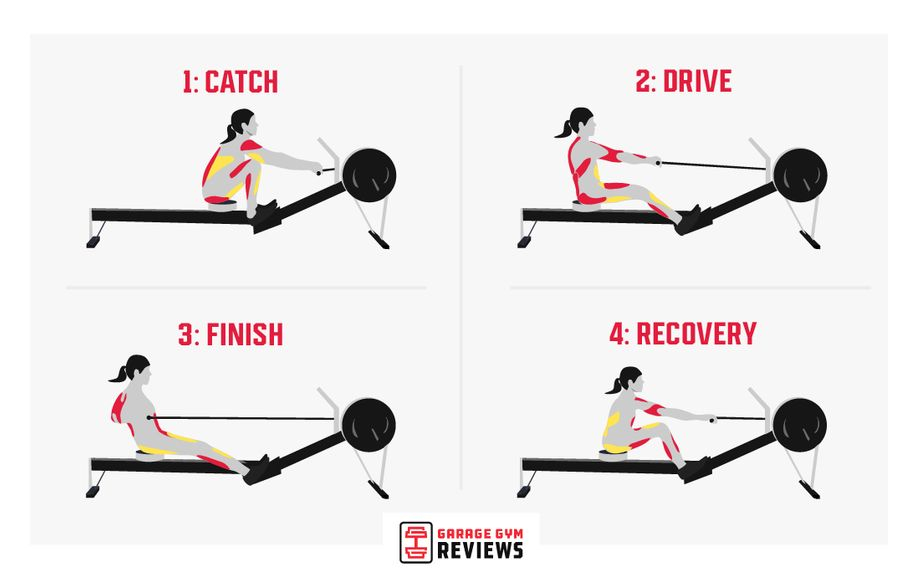
Warm-Up and Stretching
Importance of Warm-Up
Before you start rowing, it’s crucial to warm up your muscles to prepare them for the workout. A warm-up increases blood flow to the muscles, improves flexibility, and reduces the risk of injury. It also helps to gradually increase your heart rate and breathing rate, preparing your body for the upcoming physical activity.
Recommended Warm-Up Exercises
To warm up your body before rowing, you can try exercises such as jumping jacks, jogging in place, arm swings, or stationary cycling. These exercises will help to activate your muscles and get your body ready for the rowing session. Aim for a warm-up of around 5-10 minutes to ensure your muscles are adequately prepared.
Stretching Exercises
Stretching after your warm-up and before rowing is essential to improve flexibility and prevent muscle tightness. Focus on stretching the muscles in your legs, back, shoulders, and arms. Perform exercises like quad stretches, hamstring stretches, chest stretches, and shoulder rolls. Hold each stretch for about 20-30 seconds and remember to breathe deeply while stretching.
Basic Rowing Technique
Breaking Down the Stroke
Rowing consists of four main phases: the catch position, the drive phase, the finish position, and the recovery phase. Understanding each phase will help you execute the rowing stroke correctly and efficiently.
Catch Position
The catch position is the starting position of the rowing stroke. Sit on the seat with your knees slightly bent and your shins almost vertical. Lean slightly forward from your hips, keeping your back straight. Extend your arms forward and grip the handle with your hands. This is your catch position.
Drive Phase
To initiate the drive phase, push off with your legs, straightening them while keeping your arms extended. Lean back slightly and engage your core muscles. Continue driving with your legs until they are almost fully extended. Your hands should be pulled into your chest, just below your sternum. This phase requires coordination between your legs, core, and arms.
Finish Position
Once your legs are fully extended, lean back slightly more, using your core muscles. Pull the handle into your chest while keeping your elbows close to your body. Your wrists should be flat. This is the finish position, where you have completed the powerful part of the rowing stroke.
Recovery Phase
The recovery phase is the last part of the rowing stroke. It involves returning to the catch position smoothly and efficiently. Begin by extending your arms forward, away from your chest. Lean forward from your hips, allowing the handle to move past your knees. Once your arms are fully extended and your body is leaning forward, bend your legs and return to the catch position to begin the next stroke.
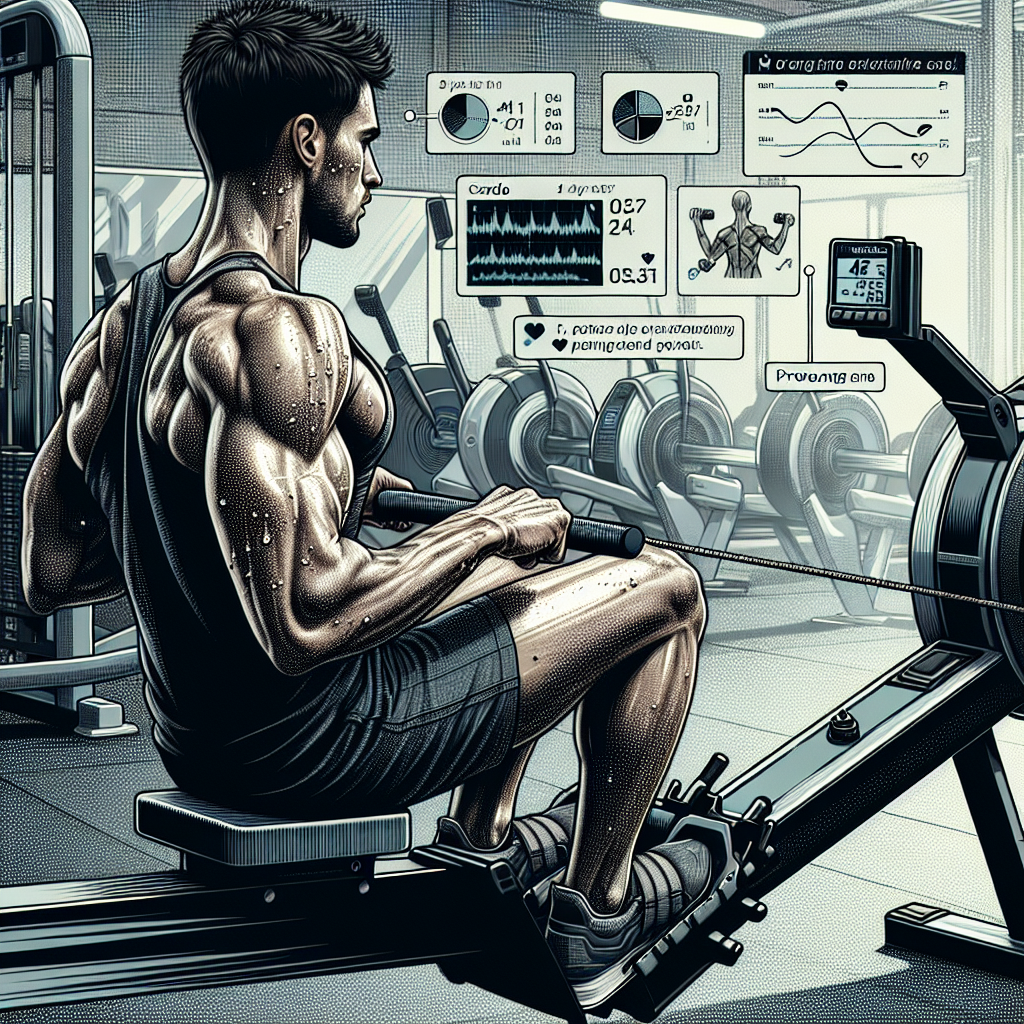
Understanding Resistance Levels
Adjusting Resistance for Beginners
As a beginner, it’s important to start with a lower resistance level on the rowing machine. This will allow you to focus on learning proper technique and building endurance. Begin with a light resistance setting and gradually increase it as you become more comfortable and confident with rowing. Listen to your body and find the resistance level that challenges you without causing strain or discomfort.
Increasing Resistance for Advanced Users
For advanced users who want to amp up the intensity of their rowing workout, increasing the resistance level can provide a greater challenge. Gradually increase the resistance over time as you build strength and endurance. However, make sure not to crank up the resistance too high too quickly, as it can lead to muscle strain or fatigue before your body is ready. Always prioritize proper form and listen to your body’s signals.
Monitoring and Maintaining Proper Form
Keeping your Back Straight
Maintaining a straight back is crucial throughout the rowing stroke. Avoid slouching or rounding your shoulders, as this can put unnecessary strain on your back and shoulders. Engage your core muscles to support your back and keep it straight and aligned. Imagine a straight line from your tailbone to the crown of your head, and strive to maintain this alignment throughout your rowing session.
Maintaining Proper Posture
In addition to keeping your back straight, it’s important to maintain proper posture during rowing. Sit tall on the seat, avoiding excessive leaning forward or backward. Keep your chest lifted, shoulders relaxed, and neck aligned with your spine. Good posture allows for optimal breathing and ensures that you’re using the correct muscles during each phase of the rowing stroke.
Avoiding Rounded Shoulders
Rounded shoulders can lead to discomfort and strain in your upper back and neck. To avoid this, focus on pulling your shoulder blades back and down throughout the rowing stroke. Imagine squeezing a pencil between your shoulder blades to help engage the correct muscles and maintain proper alignment. Preventing rounded shoulders will help you achieve a more efficient and effective rowing technique.
Engaging Core Muscles
Your core muscles play a crucial role in rowing. Engaging your core helps to stabilize your body and generate power during the drive phase. Focus on tightening your abdominal muscles while rowing to maintain stability and enhance the effectiveness of each stroke. Strong core muscles will also help protect your back and prevent injury.
Checking Hand and Arm Alignment
Proper hand and arm alignment is essential for an effective rowing technique. As you pull the handle towards your chest during the drive phase, keep your wrists flat and your elbows close to your body. This alignment allows for optimal muscle engagement and prevents unnecessary strain on your wrists and arms. Avoid bending your wrists or flaring your elbows out to the sides.
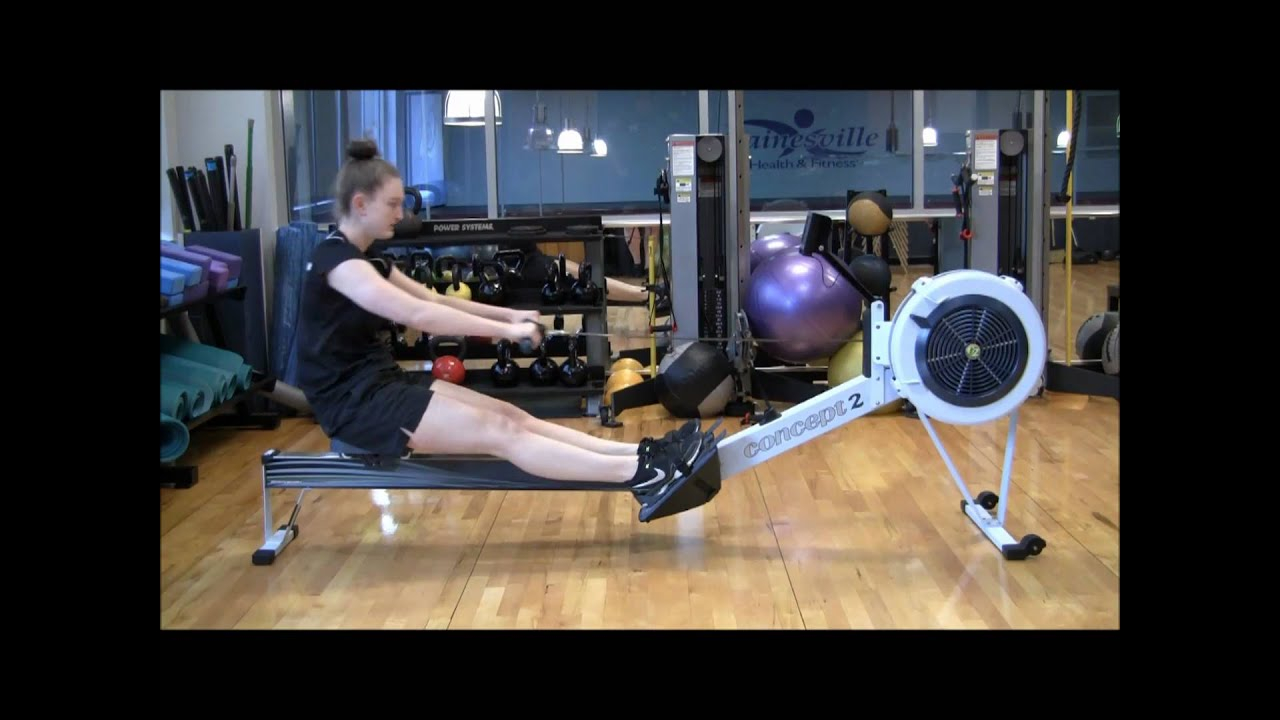
Setting Realistic Goals
Determining Your Fitness Level
Before setting goals for your rowing workouts, it’s important to assess your current fitness level. Consider factors such as your endurance, strength, and overall health. If you’re just starting out, your initial goal might be to row for a set amount of time or to complete a specific distance comfortably. As you progress, you can set more challenging goals, such as improving your rowing speed or increasing the duration of your workouts.
Setting Achievable Targets
Setting achievable targets is important to keep yourself motivated and prevent burnout. Start by setting short-term goals that are realistic and attainable within a reasonable timeframe. It could be increasing your rowing time by a few minutes each week or reaching a specific distance within a certain number of sessions. Gradually increase the difficulty of your goals as you become more comfortable and confident with rowing.
Tracking Your Progress
To stay motivated and track your progress, keep a record of your rowing workouts. Note down the duration, distance, or other metrics you’re aiming to improve. This allows you to see your progress over time and celebrate your achievements. You can also use a fitness tracker or rowing machine display to monitor your workout data. Seeing your progress can help you stay motivated and push yourself to reach new goals.
Common Mistakes to Avoid
Overarching the Lower Back
One common mistake to avoid is overarching your lower back during the rowing stroke. This can lead to strain and discomfort in your lower back. Focus on maintaining a straight back throughout the entire rowing movement. Engage your core muscles to support your back and prevent excessive arching. Proper form is key to preventing injury and maximizing the effectiveness of your workout.
Using Excessive Upper Body Strength
Rowing is a full-body workout that requires the coordination of your legs, core, and arms. It’s important to avoid relying solely on your upper body strength to power through the rowing stroke. Remember to initiate the drive phase with a powerful leg push, followed by engaging your core and finally using your arms. By using your entire body in a coordinated manner, you’ll achieve a more efficient and balanced rowing technique.
Pulling with Only Your Arms
Another mistake to avoid is relying too heavily on your arms to pull the handle towards your chest. Rowing should be a combination of leg, core, and arm movements. Your arms play a supporting role in the stroke, while the primary power should come from your legs and core. Focus on initiating the drive phase with a strong leg push, followed by engaging your core, and finally allowing your arms to naturally follow through.
Skipping the Recovery Phase
Each phase of the rowing stroke is important, including the recovery phase. Skipping or rushing through the recovery phase can disrupt the flow of your rowing technique and lead to suboptimal results. Allow yourself enough time to smoothly return to the catch position after each stroke. Use the recovery phase to reset your body, mentally and physically, for the next stroke. This will help maintain a consistent and effective rowing rhythm.
Ignoring Proper Breathing
Proper breathing technique is often overlooked but plays a crucial role in rowing. During your rowing strokes, aim to synchronize your breath with your movements. Exhale as you exert force during the drive phase and inhale during the recovery phase. This breathing pattern helps engage your core muscles and promotes efficient oxygen exchange. Focusing on your breath can also enhance your overall relaxation and concentration during rowing.
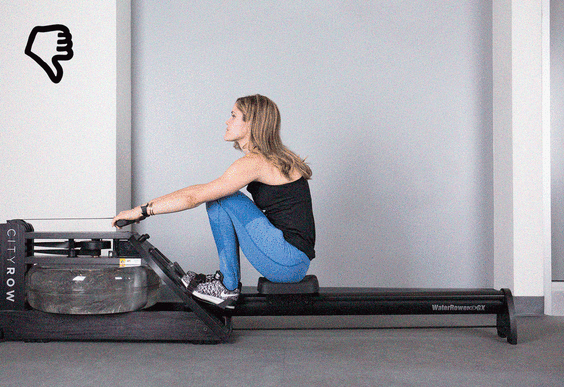
Safety Precautions
Start Slowly and Gradually Increase
When starting a rowing workout, it’s important to start slowly and gradually increase the intensity. Allow your body time to adjust to the new exercise and avoid pushing yourself too hard, too soon. Begin with shorter sessions and lower resistance levels, gradually building up to longer workouts and higher intensities. This approach will help prevent injuries and ensure a safe and enjoyable rowing experience.
Listening to Your Body
Always listen to your body’s signals during your rowing workouts. If you feel pain or discomfort, it’s important to stop and assess the cause. Pushing through pain can lead to injury. Pay attention to any signs of fatigue or overexertion, and take breaks as needed. It’s better to take it slow and make steady progress than to risk overloading your body.
Using a Spotter or Trainer
If you’re new to rowing or unsure about your technique, it can be beneficial to work with a spotter or a trainer. They can help correct your form, provide guidance, and ensure that you’re using the rowing machine correctly. A spotter can also help ensure your safety and provide motivation during your workouts. Consider scheduling a session with a trainer to receive personalized guidance for your rowing journey.
Properly Securing Loose Clothing
Before starting your rowing session, make sure to properly secure any loose clothing or accessories. Loose clothing can get caught in the moving parts of the rowing machine, leading to accidents or injuries. Remove any jewelry or accessories that may interfere with your movements. Consider wearing form-fitting clothing that allows for a full range of motion without any risk of entanglement.
Being Aware of Surroundings
When using a rowing machine, it’s important to be aware of your surroundings. Make sure you have enough space around the machine, both in front and behind you. Be mindful of other gym-goers and avoid rowing too close to someone else. This will help prevent any accidental collisions or disruptions during your workout. Stay focused and attentive to ensure a safe and uninterrupted rowing experience.
Cool-Down and Post-Workout Stretches
Importance of Cool-Down
After your rowing workout, it’s crucial to include a cool-down period to gradually bring your heart rate and breathing rate back to normal. Cooling down helps to prevent blood pooling in your muscles and promotes the removal of waste products. It also aids in preventing dizziness or lightheadedness that can occur when abruptly stopping intense exercise.
Recommended Cool-Down Exercises
For your cool-down, you can try exercises like walking or light jogging, followed by gentle stretching. Slowly decrease the intensity of your movement over a few minutes. Walk around the room or on a treadmill to gradually cool down your body. Afterward, perform stretches for your major muscle groups, focusing on the muscles used during rowing.
Post-Workout Stretches
Stretching after your rowing workout can help improve flexibility and reduce muscle soreness. Perform stretches like the hamstring stretch, standing quad stretch, chest stretch, and shoulder stretch. Hold each stretch for 20-30 seconds, breathing deeply throughout. Remember to stretch both sides of your body equally. Enjoy the benefits of increased flexibility and relaxation as you wind down from your rowing session.
By following these guidelines, you can properly set up and use a rowing machine at the gym while maintaining safety and maximizing the effectiveness of your workouts. Remember to start with the basics, focus on maintaining proper form, and gradually progress at your own pace. With regular practice and attention to detail, you’ll be on your way to enjoying a great rowing experience and reaping the many benefits it has to offer. Happy rowing!

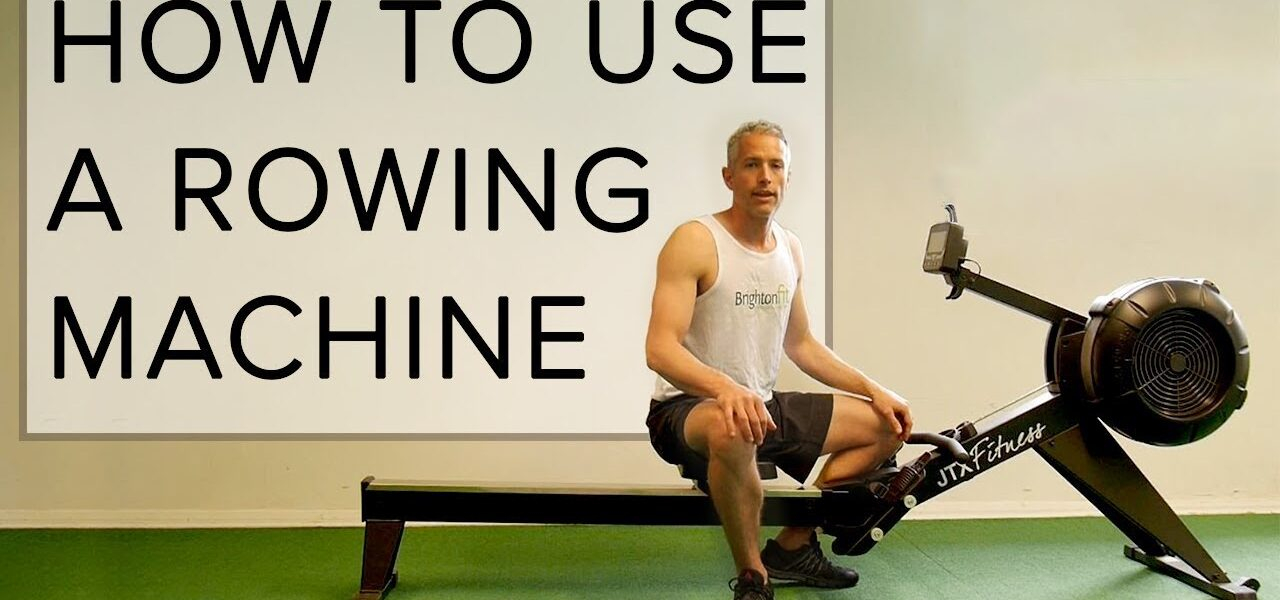
Pingback: What Gym Machine Burns The Most Calories